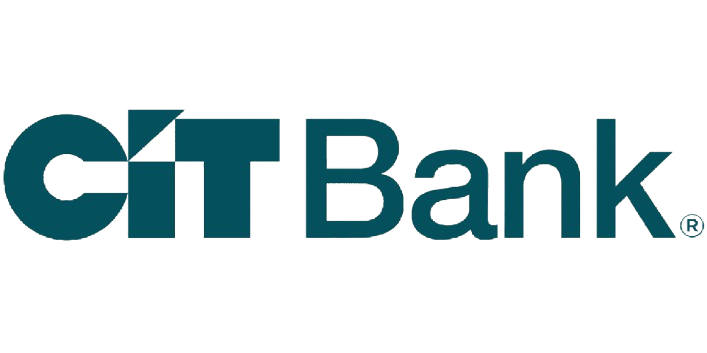With the cost of attendance at many private four-year schools bordering on $75,000 a year, financial aid is a necessity for most college students. While almost everyone is eligible for some kind of financial aid, you may not qualify for all options out there. Here’s how to tell what you are — and aren’t — eligible for.
Basic requirements for financial aid
Qualifying for federal student aid not only opens you up to Pell Grants, federal work-study and federal student loans. It’s also often the basis for other financial aid programs through your school or private organizations.
Sometimes you even need to fill out the FAFSA as part of your financial aid application for other scholarships and grants offered by your school.
Here are the requirements you likely need to meet to qualify for most types of aid:
1. Have a high school degree or equivalent
You need to have a high school diploma, GED certificate or meet your state’s standards for homeschooling to be eligible for most types of aid.
This doesn’t mean you should wait to apply for financial aid until you graduate. In fact, the Federal Student Aid (FSA) branch of the Department of Education (DoE) recommends that you submit the FAFSA as soon as possible after October 1st of the year before you plan on attending college. This is the case even if you haven’t finished applying to schools yet — you can always update your application later on.
You just need to have the equivalent of a high school degree once you’re in college to receive financial aid.
2. Be enrolled or accepted for enrollment as a regular student
In other words, you can’t get most types of financial aid if you’re just taking a few classes here and there — like filling prerequisites for another degree.
You need to be enrolled in a degree- or certificate-granting program. If you’re a visiting student at another school for a semester, you still might be able to receive financial aid through your home school, as long as you can transfer the credits.
3. Make satisfactory academic progress
Satisfactory academic progress is defined by your school. Usually, it’s maintaining either a C average or a 2.0 GPA. You also typically must complete at least 75% of the credits you attempt.
If you’re still in high school, this doesn’t apply to you — yet. Satisfactory academic progress only applies to your college grades.
4. Be a US citizen, national, permanent resident or have the right visa
You often must either be a US citizen, national, green card holder or another eligible noncitizen to qualify for financial aid. Eligible noncitizens include people holding the following visas or status:
- I-94 Refugee
- I-94 Asylum Granted
- I-94 Cuban-Haitian Entrant
- I-94 Conditional Entrant — this is valid only if issued before April 1, 1980
- I-94 Parolee — you must have parolee status for at least one year and also might have to provide evidence that you’re in the US for a temporary purpose but intend to become a citizen or permanent resident
- T-visa — children who came with a parent on a T-visa are also eligible
- Battered Immigrant-Qualified Alien
A note about US nationals
Some US nationals might not be eligible for all types of federal student aid — it depends on where you’re from.
- American Samoa or Swains Island citizens are eligible for the same options as US citizens.
- Palau citizens can qualify for federal Pell Grants, Federal Supplemental Educational Opportunity Grants (FSEOGs) and federal work-study.
- Micronesia and Marshall Islands citizens are only eligible for federal Pell Grants.
These restrictions don’t necessarily apply to all other types of federal aid. But many grants and scholarship programs that schools offer are only available to citizens or nonresidents unless they’re specifically for international students.
More requirements for federal student aid
On top of the requirements listed above, you also need to meet the following criteria to qualify for federal student aid:
- Attend a Title IV school. Title IV schools are schools that are eligible to receive financial aid. They include most nonprofits including community colleges, trade schools, and other certificate programs.
- Register with Selective Service. Men over 18 must register to be called up for service if there’s a draft. This requirement doesn’t apply to women.
- Not be in default on federal loans. You need to take steps to get out of default before you can receive any type of federal aid again.
- Not owe a refund for a federal grant. If the federal government requests that you return a grant, you won’t be able to qualify for more aid until you do so.
- No drug convictions. You might not be eligible for federal student aid if you get convicted of the possession or sale of illegal drugs while you’re receiving loans, grants or other aid from the FSA.
- Valid Social Security number. You’ll need this to complete the FAFSA, which requires you to submit tax records.
If you don’t meet these requirements, you might be able to find financial aid from other sources (like private student loans)— just not the federal government like the ones below:
|
MMG Rating:
5.0
|
MMG Rating:
4.5
|
MMG Rating:
4.7
|
|
APR starting at 3.59%
|
APR starting at 3.99%
|
APR starting at 3.59%
|
|
|
|
- Apply in less than 3 minutes
- No application or origination fees
- Cover 100% of school costs
- Verifying rates will have no impact on your credit score
- No origination fees or prepayment penalty
- Multiple payment options
- Checking rates will not impact your credit score
- Lowest rates if you have a cosigner
- Access to outcomes-based loans for eligible persons
- Covers up to 100% of school-certified costs
How do I stay eligible?
Just because you’re eligible now doesn’t mean you always will be. Here are a few tips to make sure you don’t lose your federal loans, grants, and work-study.
- Keep up those grades. Drop below a 2.0 GPA or C average at most schools and you’ll no longer be allowed to receive federal funding.
- Avoid withdrawing from courses. A “W” on your transcript not only looks bad — it also means you didn’t complete all of the credits you attempted. That can also make you ineligible.
- Stay enrolled at least half time. Thinking of taking a light semester? You won’t be able to pay for that with most types of student aid — and the grace period on your loan repayments will kick in.
- Make federal debt repayments on time. If you miss a federal student loan repayment by more than 270 days, you lose your eligibility. Owe any other money to the federal government? You could also become ineligible.
- Stay out of jail. Drug convictions while you’re receiving federal aid may make you ineligible to borrow again. Being incarcerated for anything can also cause you to lose eligibility for some types of aid.
How you could lose eligibility on non-federal aid
Many scholarship and grant programs outside of the FSA have requirements you must meet to remain eligible. If you lose your eligibility after the fact, you might even be required to repay your funding.
You might lose funding if you don’t:
- Register for a required course
- Pass a required course
- Maintain the required GPA — some scholarships require a 3.5 GPA or higher
- Complete required community service
- Complete a required internship
Financial aid offices and scholarship funds are often more flexible than the FSA, however. If you don’t meet a requirement due to circumstances out of your control, you might be able to remain eligible as long as you explain the situation.
Can I get my eligibility back?
Often you can — at least with federal aid. The steps you need to take depend on the reason why you lost your eligibility.
Get out of default
You have two options if you lost your eligibility due to a defaulted federal student loan:
- Consolidate your loans. Take out a federal Direct Consolidation Loan to pay off your old debt and wipe the slate clean.
- Rehabilitate your loans. Make nine repayments over no longer than 10 months to get your student loans out of default. Your repayments will be adjusted based on your income.
Appeal to the financial aid office
Lost eligibility over your academic progress? You can often appeal to the financial aid office. They might allow you to keep your eligibility as long as you meet certain conditions or boost your GPA the following semester.
Go to rehab
You can regain eligibility after a drug conviction by entering an approved rehab program. You either need to complete the program or pass two unannounced drug tests before you can receive federal aid again.
Pay off government debts
If the government has a lien on your property due to an unpaid debt, your only option is to pay that off first before getting federal aid again.
Bottom line
As long as you stay on top of your grades and out of trouble, you’re likely eligible for financial aid at your school. And even if you don’t qualify for federal aid, there might be other opportunities available to you through your school or outside organizations.
Be sure to check with your school’s financial aid office before applying for any scholarships and grants. And don’t be afraid to advocate for yourself if you lost eligibility through no fault of your own.














